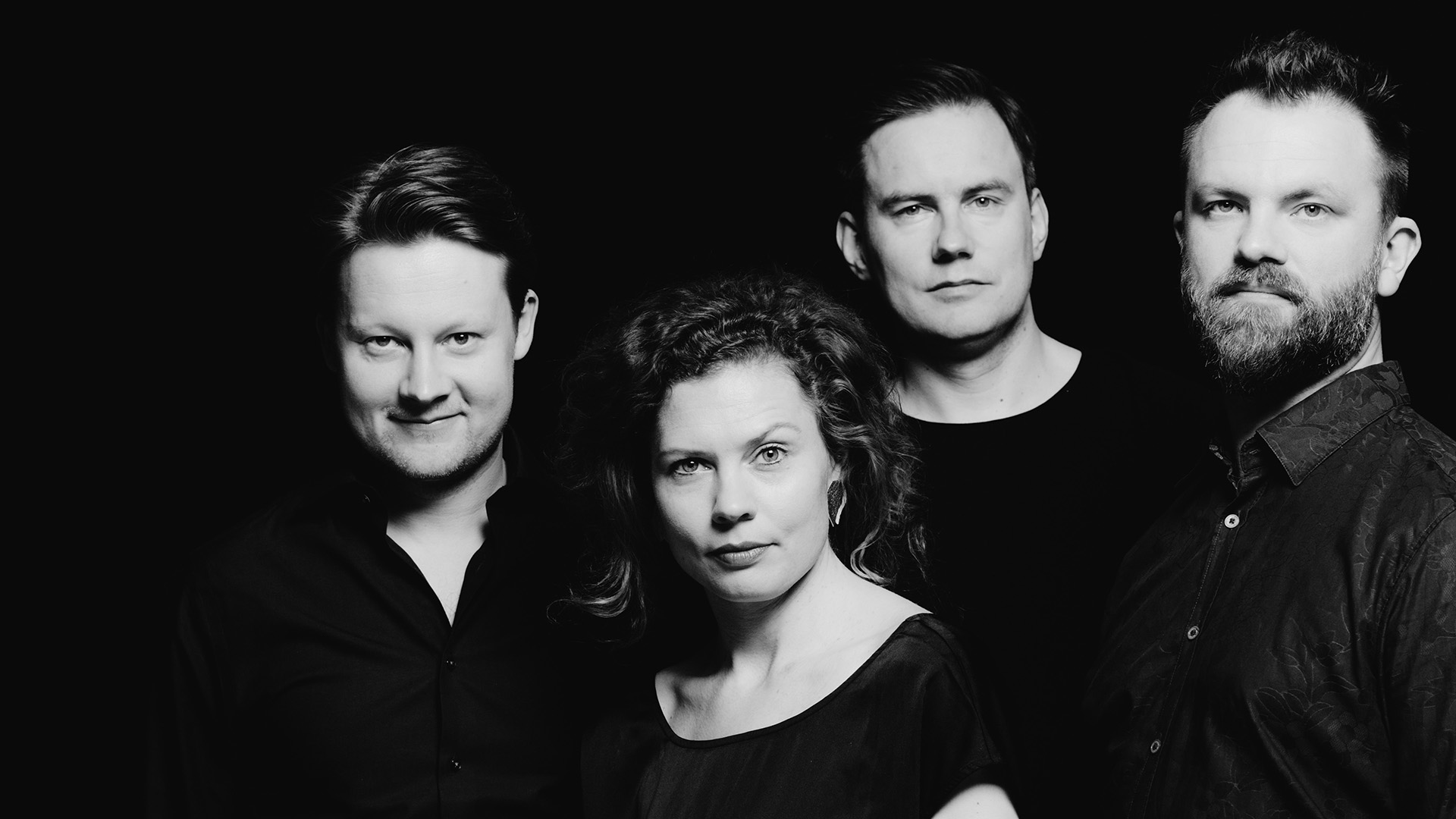The Meta4 String Quartet will lead the orchestra in a performance of two pieces from the early 19th century: an imaginative and sweet quartet and a handsome, ambitious symphony. Fanny Hensel’s childhood home in Berlin was filled with music: concerts, piano lessons, musical plays. Fanny and her brother Felix Mendelssohn composed together from an early age. Louise Farrenc in turn lived her childhood in the creative atmosphere of a family of sculptors in Paris. The career paths of these gifted female composers were compromised at the point when their home performances should have been replaced by public concerts.
Meta4
Meta4 is one of Finland's most successful string quartets. During the 2022–2023 concert season, the quartet will be visiting Canada, the United States, Italy, and Great Britain, among other destinations. Founded in 2001, Meta4 consists of violinists Antti Tikkanen and Minna Pensola, violist Atte Kilpeläinen, and conductor and cellist Tomas Djupsjöbacka. In addition to performing in its own recitals, Meta4 also leads orchestras.
Antti Tikkanen is the artistic partner of the Joensuu City Orchestra and, along with Minna Pensola, the artistic director of the Kuhmo Chamber Music Festival. Pensola teaches at the European Chamber Music Academy and the Sibelius Academy in Helsinki. Atte Kilpeläinen is the principal violist of the Helsinki Philharmonic Orchestra and teaches at the Sibelius Academy. Tomas Djupsjöbacka is the chief conductor of the Vaasa City Orchestra. Djupsjöbacka has a background in chamber music and regularly performs with the Chamber Orchestra of Europe.
http://www.meta4.fi/
Jaakko Kuusisto: Wiima, Op. 27
Being himself a violinist and conductor, Jaakko Kuusisto (1974–2022) was more than familiar with the way instruments work and what they can do. He was also one of the most interesting Finnish composers of his generation, seeking ideas in many directions and writing music that is unfailingly idiomatic for the instrument in question. He composed three works called Play, an ambiguous title alluding to both games and playing an instrument. The third of these was premiered by the Meta4 Quartet in 2008. Three years later, Kuusisto did a version for string orchestra and renamed it Wiima. It is a work dramatically contrasting passionate and peaceful, random and precisely notated episodes, and it has a coda with, as he put it, “an improvisational texture that also accompanied the opening and coloured the work at various stages”. The music of Wiima is, he said, somehow anchored on tonality, but the anchor is sometimes very loose.
Fanny Hensel: String Quartet
Fanny Hensel (1805–1847), wife and mother, was Felix Mendelssohn’s big sister. Many of her nearly 500 compositions were solo songs or pieces for the piano, and some were published under her brother’s name as even he considered composing unsuitable for a woman. Not until the 1980s did the public at large begin to recognise her genius. In 1829, she started composing a piano sonata but was prevented by family obligations from finishing it. Then in 1834, she rewrote and supplemented the sonata material as a string quartet. Felix said it was too experimental, yet its charm lies in its unwillingness to fully subscribe to the classical conventions, and in terms of expression, it is in many ways more convincing than his string quartets. Thirteen years passed before Fanny attempted to compose any more chamber music, this time a piano trio. She clearly had much to offer the genre, despite her belief that she lacked the ability to create and develop long lines and was better at writing songs.
Louise Farrenc: Symphony No. 3 in G Minor, Op. 36
While still a young student, Louise Farrenc (née Jeanne-Louise Dumont, 1804–1875) already displayed great talent as both a pianist and a composer. She went on concert tours with her flautist husband and in 1842 was appointed professor of the piano at the Paris Conservatoire. She nevertheless renounced her active career to some extent after the death of her daughter in 1859.
Louise Farrenc mainly composed chamber music that was both popular and critically acclaimed and won her prestigious awards. She was, however, never allowed to teach composition; the Paris Conservatoire did not even admit female composition students until 1870. As a pianist, Louise constantly had to demand the same fee as her male colleagues. She wrote three symphonies, the last of them in 1847, premiered in Paris two years later. Her husband did his best to market it outside France, but it was soon forgotten after her death. An impressive and highly distinctive work, it is similar to the Classical-Romantic idiom of, say, Mendelssohn and Berwald, and has in recent years begun to find the place it deserves in the international concert repertoire.

